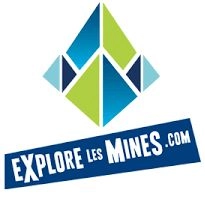Since the era of the great explorers, the search for minerals in Quebec has been the source of important discoveries. This section sets out some important dates for the Quebec mining industry.
1686:
Discovery of a lead, zinc and silver deposit in Abitibi-Témiscamingue, by the Chevalier de Troyes, on the shore of Lake Témiscamingue. This deposit sank into oblivion for 200 years, before being exploited in the 1890s.
1835:
First discovery of gold nuggets in the Chaudière-Appalaches region.
1865:
Operation of the first copper mine, the Eustis mine, near Sherbrooke.
1867:
Joseph Fecteau, farmer, discovers asbestos in the canton of Thetford.
1878:
Discovery of an asbestos deposit by William Jeffrey in the Asbestos region and start of asbestos mining at the Bell mine in Thetford Mines. Asbestos mining at the Jeffrey mine began in 1881.
1880:
Quebec passes the first mining law, the Quebec General Mining Act. This act gives the government ownership of the basement. It becomes the owner of all the mines on its territory, which will subsequently be granted to third parties.
1920-1930:
The openness of northwestern Quebec dominates the mining landscape. Abitibi-Témiscamingue accounts for 90% of the mining titles registered in Quebec. At that time, the companies were mining copper, gold, iron and asbestos.
1920-1950:
Mining takes place in several regions. In addition to finding deposits in Abitibi-Témiscamingue, we find them in Chibougamau (Nord-du-Québec), on the North Shore, in Labrador, in the Gaspé peninsula and in Estrie.
1950-1970:
We are witnessing an upsurge in the exploitation of iron on the North Shore, gold and copper in Abitibi-Témiscamingue and asbestos in Estrie.
1970-1975:
Construction of mining facilities (surface mine, crusher, mill and concentrator) at Mont-Wright and the town of Fermont.
1978-2004:
Commissioning of the Thompson Bousquet mines in 1978 and Doyon in 1979, north of the municipality of Cadillac, in Abitibi-Témiscamingue, as well as the LaRonde (Dumagami) deposits in 1988 and Bousquet 2 in 1990. The Bousquet mining camp- Cadillac remains today the main gold mining territory in Quebec, with the Doyon, Mouska and LaRonde mines.
2000-2001:
Discovery of diamonds east of Ungava Bay and near the Otish Mountains.
2002:
A major increase in mining claim acquisitions marks Quebec with 46,000 claims registered between February and May 2002, including 42,000 in the Middle North of Quebec, following the announcement of the discovery in December 2001.
2003:
Nine diamondiferous kimberlite bodies, constituting the Renard swarm, were discovered on the Foxtrot property by Les Mines Ashton du Canada inc. and SOQUEM inc. A 36.5 tonne bulk sample from several kimberlites that form the central zone of the Renard cluster reveals 24 carats of diamonds in total, for a diamond content of 0.66 carats per tonne. Forty-nine of these diamonds weigh at least 0.10 carats. One of the gemstones sampled has a weight of over 4 carats. It is, to this day, the largest diamond found in Quebec.
2004 :
Ashton Mines of Canada Inc. and SOQUEM inc. invested approximately $ 18M in 2004 on the Foxtrot property, in particular to carry out a bulk sample of 639 tonnes of kimberlitic material from the Renard swarm in order to assess the diamond value of the kimberlites. The first 269 tonnes processed produced a total of 97 carats. A kimberlite dyke swarm called "Lynx" is recognized and explored west of the Renard swarm.



 Member
Member